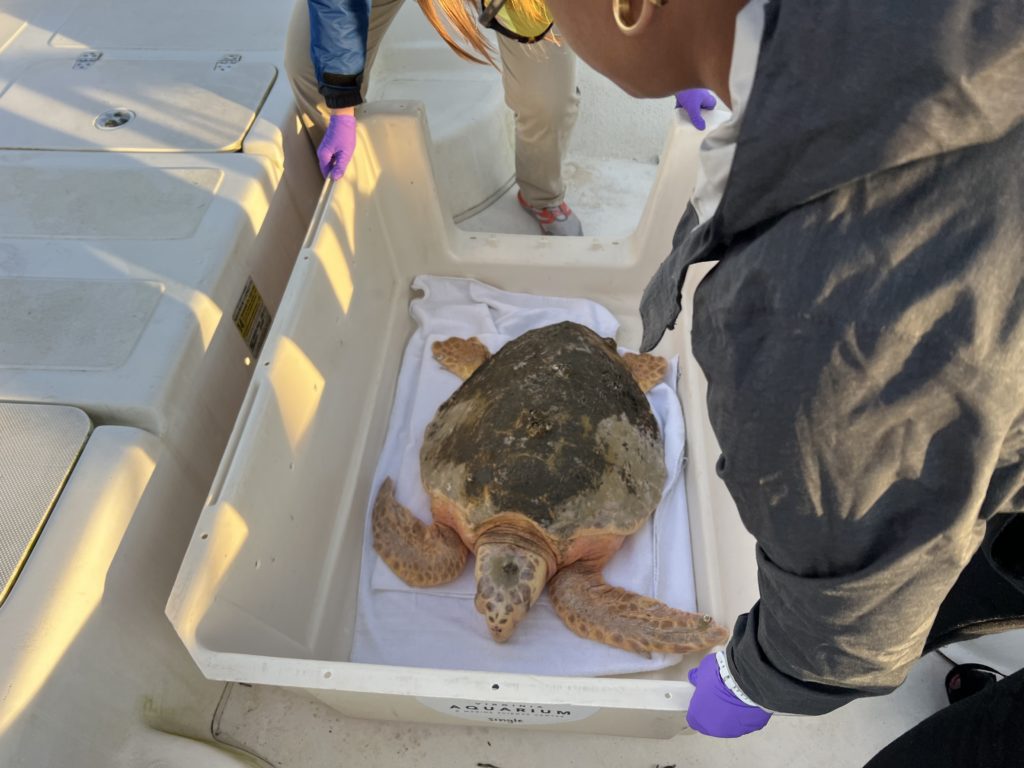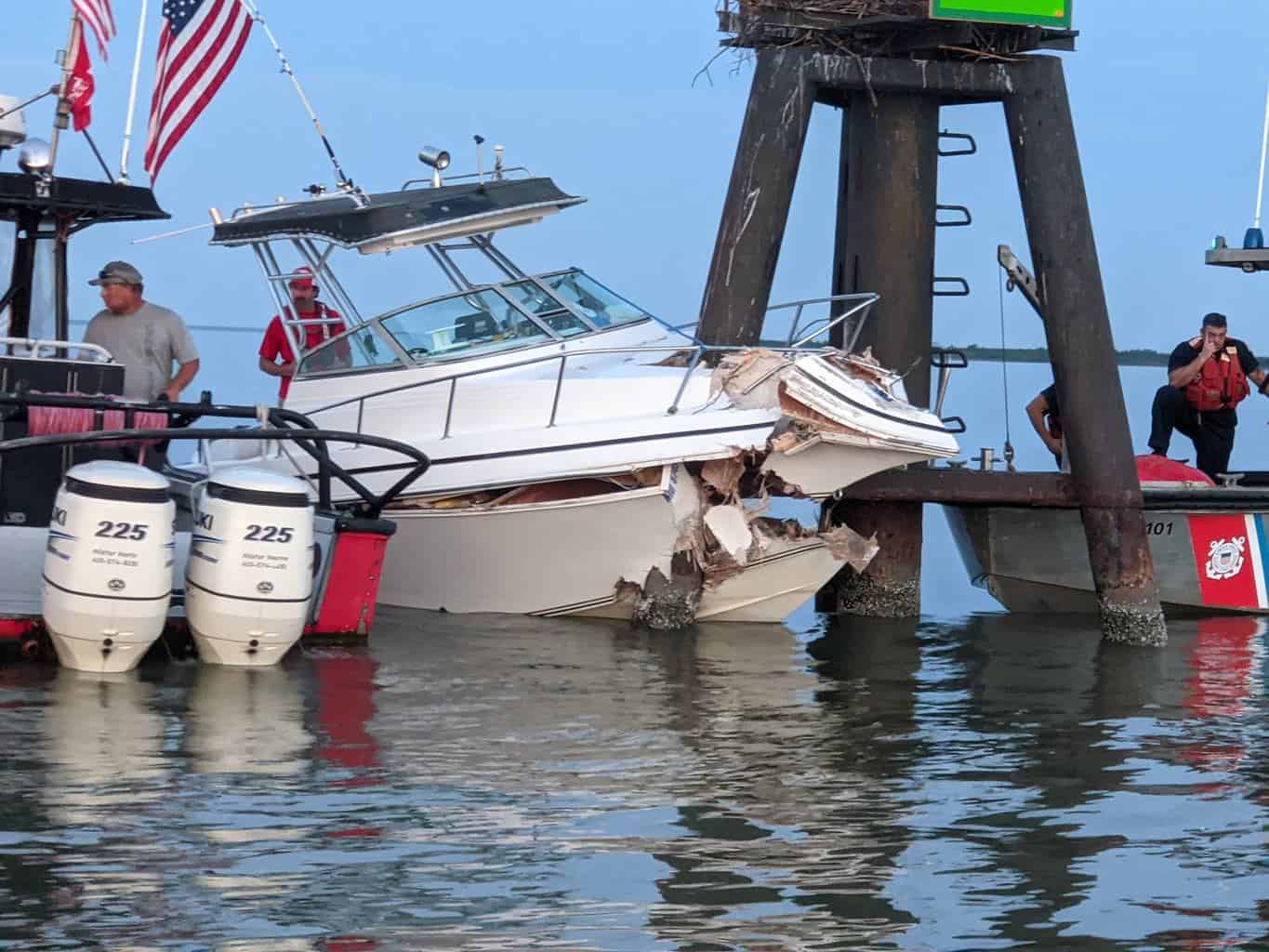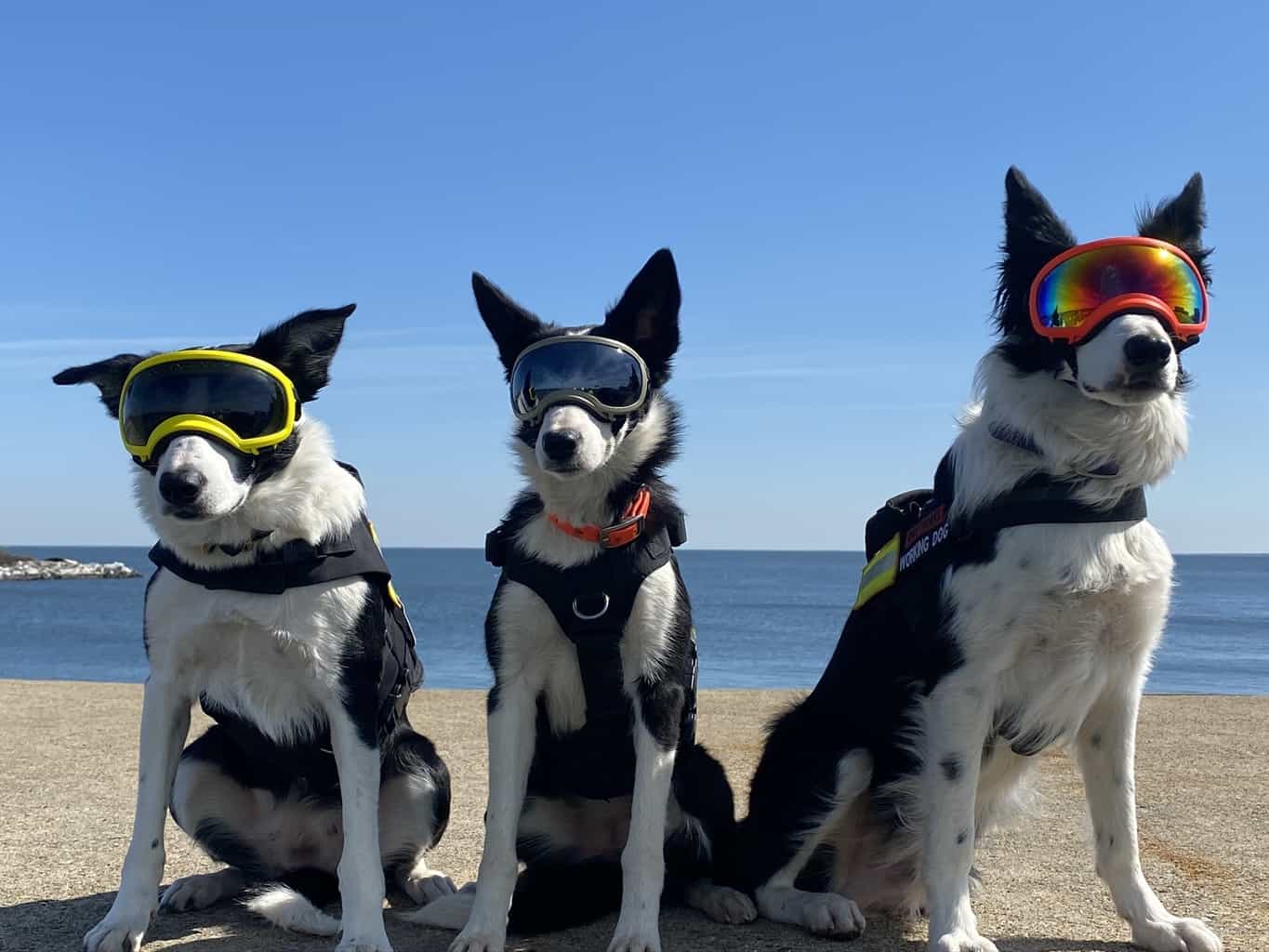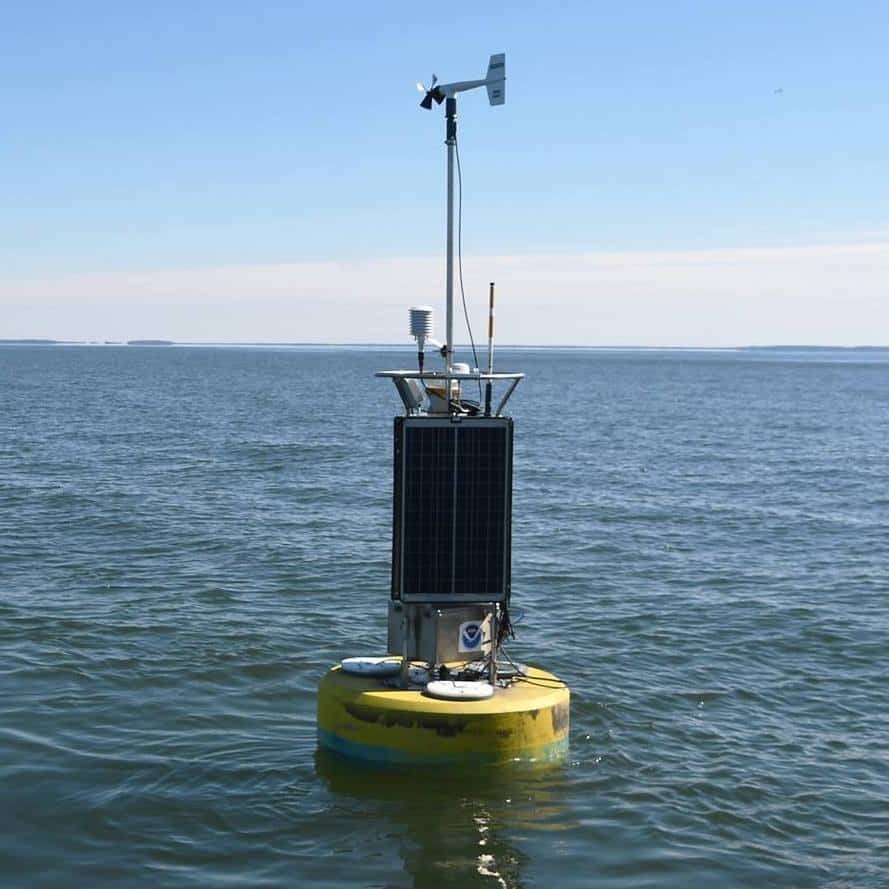If a marine animal is struggling in cold water and someone happens to spot it, you’d want that someone to be an experienced Bay scientist.
That’s the lucky break that a loggerhead sea turtle got on Nov. 12, and now it’s on the road to recovery.
Chris Moore, Senior Regional Ecosystem Scientist for the Chesapeake Bay Foundation, was boating on the Lynnhaven River in Virginia Beach when he happened upon the sea turtle, who was unresponsive.
Moore knew what to do. He immediately contacted the Virginia Aquarium and Marine Science Center’s Stranding Response Team, which saved the turtle’s life.
Then on Nov. 30, Moore was able to meet the turtle again as it recovers from several ailments. The loggerhead is being treated at the aquarium’s Darden Marine Animal Conservation Center, a new, first-of-its kind animal stranding response center we reported on in August.
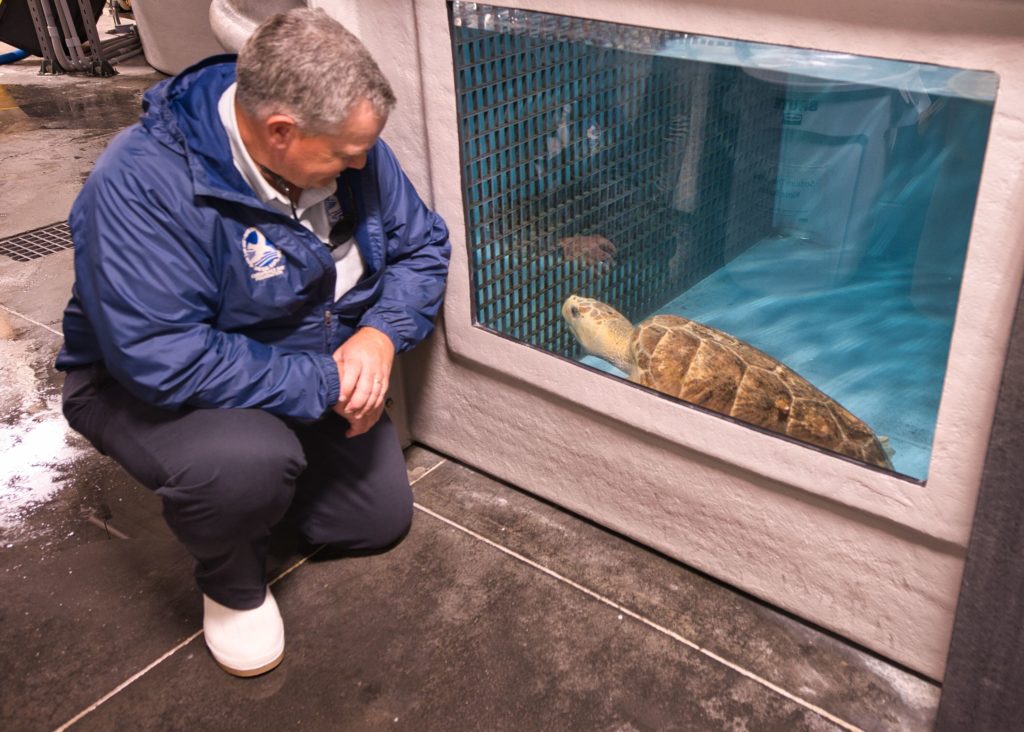
“The turtle was floating,” said Moore. “I was not sure if it was even alive.” He says the loggerhead was completely lethargic, and had pink areas on its skin. When the Stranding Response Team arrived, the poor turtle’s body temperature was 56.9 degrees. Normal is 76 to 78 degrees.
The turtle was transported to the Darden Center for examination. Not only was it suffering from the cold, it had pneumonia. According to Erin B. Bates, Rehab Manager at the center, “pneumonia can produce gas which makes the turtles float. The pink areas are frostbite. The damaged skin might heal, or it might peel off, similar to a peeling sunburn.”
The turtle had to be warmed. “We warm them slowly, about 5 degrees per day,” said Bates.
The marine animal is also receiving antibiotics for the pneumonia. Feeding consists of herring, shrimp, and squid. The treatment is working, as the turtle was swimming normally in its tank when Bay Bulletin visited the facility alongside Moore. The turtle’s gender is unknown. It weighs about 66 pounds. As for a name, he or she is called Iliocostalis, after the large back mussel of the same name.
Personnel at the rehab center use a variety of themes to name their patients. A recent theme was cheese, which explains why there is a turtle in the facility named Colby-Jack. There is another named Gouda.
Bates said the facility is essentially at capacity now, with 20 turtles. They have loggerheads as well as green and Kemp’s ridley turtles in recovery. The goal is to release all the turtles back into the wild when they are ready. Of the 71 sea turtles that the Stranding Response Team admitted into rehab this year, 50 have been successfully rehabilitated and released. Additionally, nine sea turtles were released in 2022 that were stranded in 2021.
The Darden Marine Animal Conservation Center has access to natural seawater for the patients. Opening in 2021, the center was made possible by the Darden Family and the Joshua P. and Elizabeth D. Darden Foundation.
Moore was delighted to see Iliocostalis swimming about in such better health than at their first meeting. He encourages everyone to put the Stranding Response Team’s number in their phones.
Bates agrees. “Once a sea turtle hatches and crawls into the water, it never leaves the water again except to lay eggs,” said Bates.
Therefore, if you find a sea turtle on the beach during your afternoon walk, something is probably wrong. The best way to help is to do exactly as Moore did, call the Stranding Response Team right away at 757 385-7575. They are available 24-hours a day, every day. You can support the team at virginiaaquarium.com/support/give-to-stranding.
-Kendall Osborne

